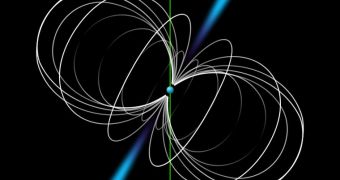Investigators now suggest that neutron stars – objects which form following supernova events – may over time transform into strange stars. The latter is a type of stellar object that is made out of ”strange”quarks, a specific type of elementary particle.
In the Standard Model, there are three main categories of particles – quarks, leptons and bosons. The latter are force carriers, while the former two are actual, detectable particles. There are also six different types of quarks, and just as many leptons.
The six types of quarks are called “up,” “charm,” “top,” “down,” “strange” and “bottom.” What experts are proposing in the new study is that neutron stars turn into objects made up of “strange” quarks.
The team behind the work is also challenging conventional wisdom on how such an object would look like. Until now, particle physicists proposed that a strange star would be extremely luminous. This research appears to challenge that notion.
Researchers from the US Department of Energy's (DOE) Argonne National Laboratory (ANL) and the Los Alamos National Laboratory (LANL) conducted the new investigation. They base their new proposal on studies of the electric fields that theoretically develop around such an object.
“We haven't found strange stars yet. But that doesn't mean they don't exist. Maybe we have found them. Maybe some of these neutron stars are really strange stars,” says ANL researcher Prashanth Jaikumar.
“According to our theory, it would be very difficult to tell a strange star from a neutron star,” adds the investigator, who led the work alongside LANL colleagues Sanjay Reddy and Andrew W. Steiner.
Neutron stars, the team says, exhibit a weird form of matter at their cores, called a superfluid. This means that the objects are so closely packed together and so dense that the material they're made up of becomes a frictionless liquid. Neutron stars are usually about 20 miles across.
According to the DOE experts, a strange star would have a liquid core as well, but not necessarily a solid surface, as experts believed until now. “It's like taking water with a flat surface. Add detergent and it reduces surface tension, allowing bubbles to form,” Jaikumar adds.
“In a strange star, the bubbles are made of strange quark matter, and float in a sea of electrons. Consequently, the star's surface may be crusty, not smooth. The effect of surface tension had been overlooked before,” the investigator adds, quoted by Daily Galaxy.

 14 DAY TRIAL //
14 DAY TRIAL //